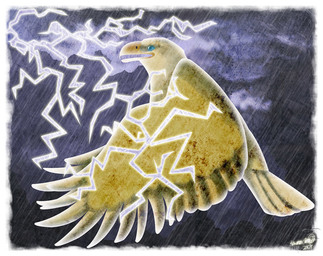Sign in or 


 The Thunderbird is a legendary creature in certain North American indigenous peoples' history and culture. It is considered a "supernatural" bird of power and strength. It is especially important, and richly depicted, in the art, songs and oral histories of many Pacific Northwest Coast cultures, and is found in various forms among the peoples of the American Southwest and Great Plains. Thunderbirds were major components of the Southeastern Ceremonial Complex of American prehistory.
The Thunderbird is a legendary creature in certain North American indigenous peoples' history and culture. It is considered a "supernatural" bird of power and strength. It is especially important, and richly depicted, in the art, songs and oral histories of many Pacific Northwest Coast cultures, and is found in various forms among the peoples of the American Southwest and Great Plains. Thunderbirds were major components of the Southeastern Ceremonial Complex of American prehistory.

Kittyeatyou |
Latest page update: made by Kittyeatyou
, Sep 23 2011, 1:24 PM EDT
(about this update
About This Update
 Edited by Kittyeatyou
Edited by Kittyeatyou
290 words added 1 image added view changes - complete history) |
|
Keyword tags:
None
More Info: links to this page
|